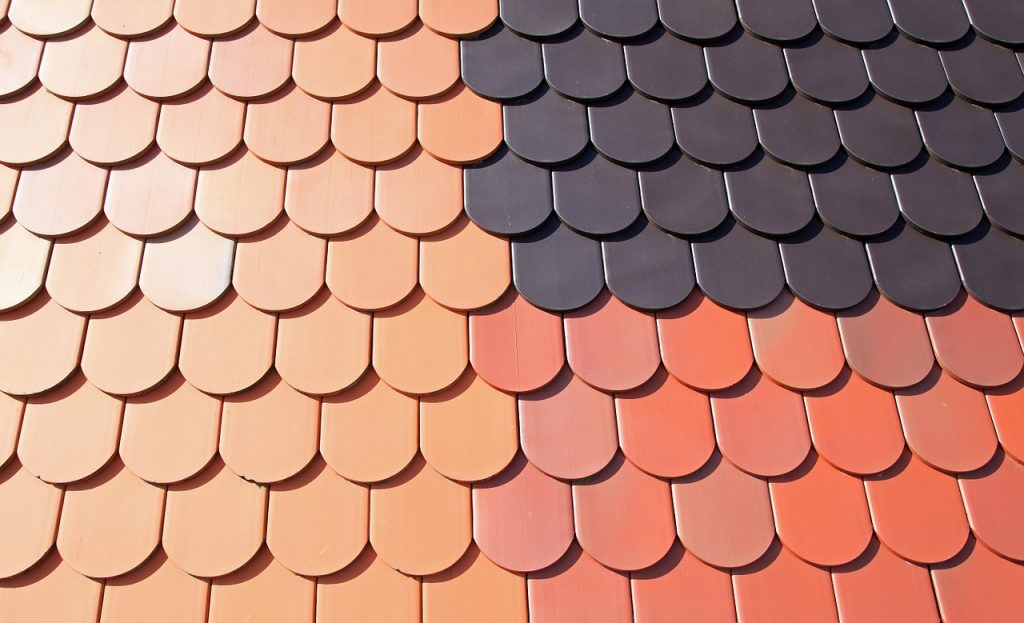Are you considering installing concrete, asphalt, or metal roofing materials in your new home? The type of roofing material you select can influence the structural integrity of your house. So, you should evaluate various options to find what suits your home best.
There’s no doubt that building a home is one of the most expensive investments. You want a roofing material that can withstand extreme weather conditions and last for many years. Thankfully, we’ve prepared a comprehensive list of roofing materials to help you choose from.
Keep reading to find out the roofing material that suits your new home.
Different Roofing Materials List for 2021 Roofing Projects
This section explores the various roofing materials you will find in the market, including asphalt, wood, concrete, slate, and metal roofing materials. You’ll also learn about their pros and cons to help you make an informed decision.
Let’s get started!
- Asphalt Shingles
Many single-family homes in the United States have roofs made of asphalt shingles that have been around for many years. Their long-term benefits make them invaluable tools for roofing in 2021. They are attractive, affordable, durable, and readily available.
Asphalt shingles come in two forms: fiberglass and organic asphalt shingles. The former comprises fiberglass mesh covered in asphalt and topped using granules that offer color and reflect light. Organic asphalt shingles consist of paper saturated with asphalt.
Pros
- Most affordable roofing options for many homeowners
- Vast selection of colors and style to meet every homeowner’s needs
- Fiberglass shingles have great fire resistance
- Asphalt shingles can last for up to 30 years
Cons
- Higher lifetime costs than other roofing materials, including metal and tiles
- The shingles can crack when temperatures change rapidly
- Asphalt shingles don’t offer insulation like some roofing materials
- Metal Roofing Materials
For hundreds of years, homeowners have been using metal roofing materials, an option that has enjoyed a resurgence recently. Manufacturers have developed ways to create metal roofs that don’t produce a lot of noise during heavy rains or strong winds.
Metal roofing materials come in various shapes and designs to suit the needs of several property owners. They can be in shakes, shingles, tiles, or the conventional metal roof style. The most common metal roofing materials are aluminum, steel, and zinc.
Pros
- Metal roofing materials can last for up to 100 years when maintained properly
- Ribbed and corrugated metal roofing panels can be installed faster on budget
- They come in various styles or forms, including shakes, tiles, and shingles
Cons
- Costs of metal roofing materials are high, with copper being the most expensive
- Produces a lot of noise during rains when there’s no substrate for soundproof
- Clay and Concrete Tiles
These roofing materials have been in use for many years, and thanks to the modern versions that are stronger and more beautiful. They come in three forms: traditional clay tiles, concrete tiles, and fiber-cement tiles. Notably, the tiles have waterproof coatings.
Incredibly, clay and concrete tiles are heavy and can last for a very long time. In some cases, homeowners don’t have to replace the roofs due to their longevity and durability. If you live in warmer climates, these tiles will shield your roof from the sun and rain.
Pros
- Last longer than many roofing materials you’ll find in the market
- Light-colored tiles reflect light and heat, making them energy-efficient
- Clay and concrete are non-combustible, making them fire-resistant
Cons
- Clay and concrete are heavy and difficult to install
- Repairing other roofing elements like chimneys can be tricky as they are fragile
- They are more costly than metal, asphalt, and wood
- Wood Shingles and Shakes
If you’re looking forward to installing nature-inspired roofing, then you should consider wood shingles and shakes. They’ll give your roof a natural dose of beauty. Some of the wood materials in the market are cedar, cypress, redwood, and pressure-treated pine.
Wood shingles and shakes are different in terms of thickness and smoothness. Shingles are machine-cut with clean edges and a smooth surface for a more uniform appearance. On the other hand, shakes are hand-cut, thicker, and feature a more rustic appearance.
Pros
- Neat shingles and rustic shakes incorporate natural beauty into a property
- Redwood and cedar are naturally resistant to insects and moisture
- Wood’s insulation value is higher than that of asphalt shingles
Cons
- Not suitable for roofing in regions prone to wildfire
- They can grow mold and mildew if not maintained in wet climates
- Untreated wood materials require much maintenance
- Natural Slate Tiles
Natural slate tiles resemble shingles but last longer and perform better. They are the most durable roofing materials, lasting for over a hundred years if maintained properly. Despite being expensive, the benefits of natural slate tiles are endless.
Pros
- Natural stone slates are durable and can last for a century if well-maintained
- Slate tiles can withstand fire outbreaks, strong winds, and severe storms
- Natural slates are sustainable roofing materials as you can recycle them
Cons
- Natural slates are heavy and usually need additional support
- They are very expensive to cut and install, prolonging the roofing process
- They require professional installation services and extra framing
Pro Tip: To offset the drawbacks of natural slate tiles, manufacturers have innovated synthetic slate roofing systems, which are lightweight and less costly, yet strong.
- Rubber Roofing Materials
Rubber roofing is increasingly growing in popularity among many homeowners. It’s one of the most reliable and durable roofing materials as it can withstand extreme weather conditions. Note that rubber roofing materials don’t support mold and mildew growth.
Pros
- Rubber offer affordable roofing solutions as they are inexpensive
- The material provides quicker and easier installation than other roofing materials
- They are eco-friendly and can last for up to 50 years maintained properly
Cons
- The color of rubber roofing materials can fade with time
- They are delicate and can easily get destroyed by falling branches
- Require professional installation and maintenance services
Final Words
Understanding the different roofing materials is crucial as it helps you find what works best for your house. When selecting a roofing material, try to figure out your region’s climate because different roofing materials work best in certain climates. If you find it difficult to choose the right material, professionals at Roof Master can help you.
Contact us today for high-quality roofing materials and roof installation services.



